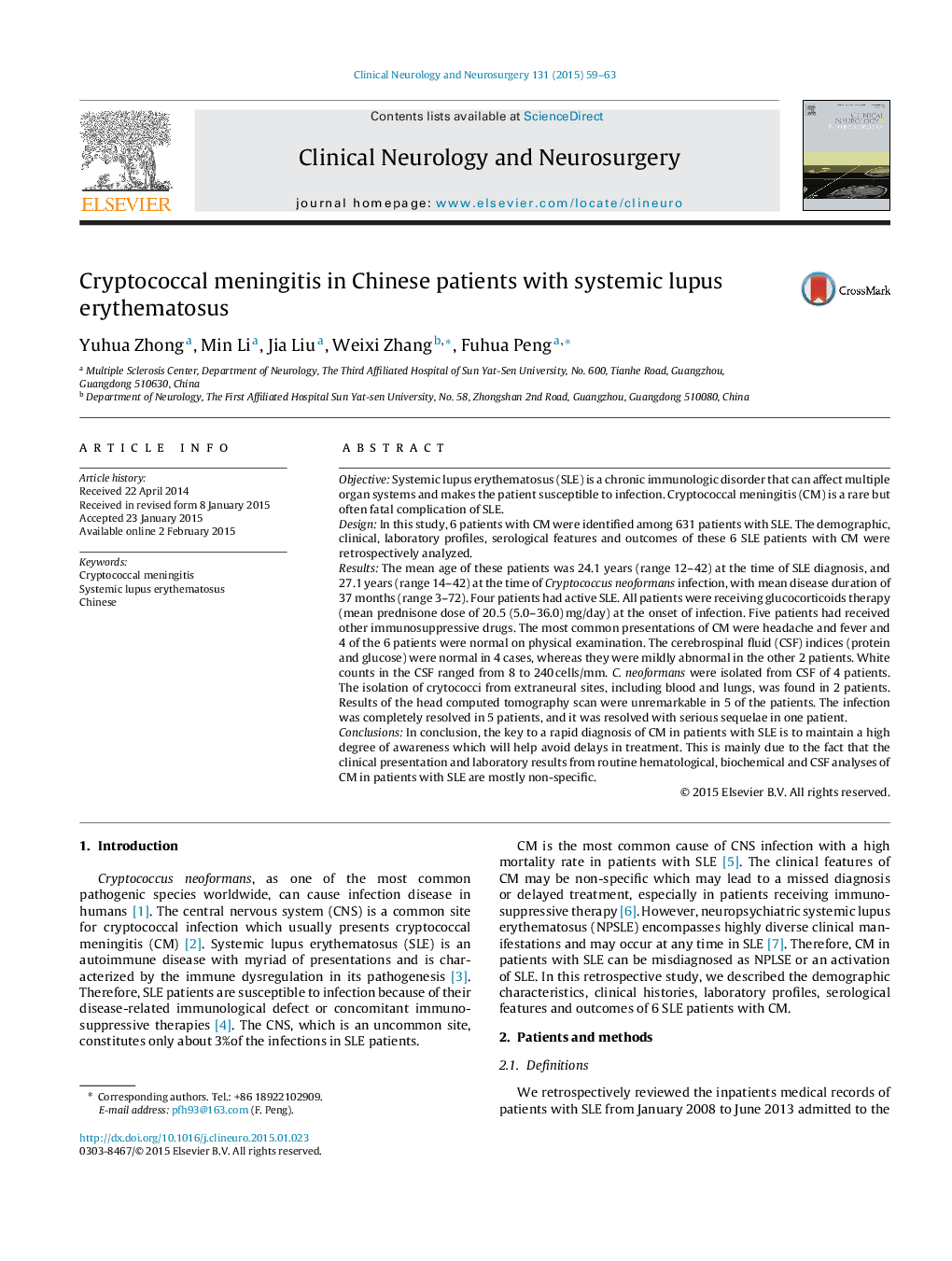| کد مقاله | کد نشریه | سال انتشار | مقاله انگلیسی | نسخه تمام متن |
|---|---|---|---|---|
| 3039951 | 1579691 | 2015 | 5 صفحه PDF | دانلود رایگان |
• The study highlights that the clinical symptoms of CM in patients with SLE are nonspecific.
• We conclude that high index of suspicion is needed to detect this potentially life threatening condition.
• The CM with SLE will have satisfactory outcomes provided by an accurate diagnosis and early therapy.
ObjectiveSystemic lupus erythematosus (SLE) is a chronic immunologic disorder that can affect multiple organ systems and makes the patient susceptible to infection. Cryptococcal meningitis (CM) is a rare but often fatal complication of SLE.DesignIn this study, 6 patients with CM were identified among 631 patients with SLE. The demographic, clinical, laboratory profiles, serological features and outcomes of these 6 SLE patients with CM were retrospectively analyzed.ResultsThe mean age of these patients was 24.1 years (range 12–42) at the time of SLE diagnosis, and 27.1 years (range 14–42) at the time of Cryptococcus neoformans infection, with mean disease duration of 37 months (range 3–72). Four patients had active SLE. All patients were receiving glucocorticoids therapy (mean prednisone dose of 20.5 (5.0–36.0) mg/day) at the onset of infection. Five patients had received other immunosuppressive drugs. The most common presentations of CM were headache and fever and 4 of the 6 patients were normal on physical examination. The cerebrospinal fluid (CSF) indices (protein and glucose) were normal in 4 cases, whereas they were mildly abnormal in the other 2 patients. White counts in the CSF ranged from 8 to 240 cells/mm. C. neoformans were isolated from CSF of 4 patients. The isolation of crytococci from extraneural sites, including blood and lungs, was found in 2 patients. Results of the head computed tomography scan were unremarkable in 5 of the patients. The infection was completely resolved in 5 patients, and it was resolved with serious sequelae in one patient.ConclusionsIn conclusion, the key to a rapid diagnosis of CM in patients with SLE is to maintain a high degree of awareness which will help avoid delays in treatment. This is mainly due to the fact that the clinical presentation and laboratory results from routine hematological, biochemical and CSF analyses of CM in patients with SLE are mostly non-specific.
Journal: Clinical Neurology and Neurosurgery - Volume 131, April 2015, Pages 59–63
